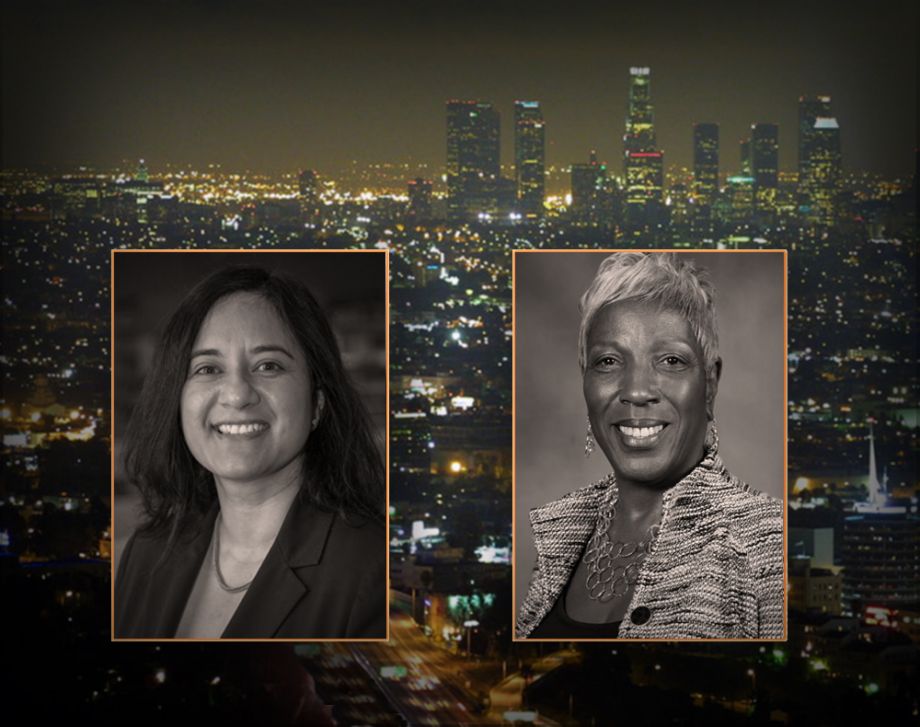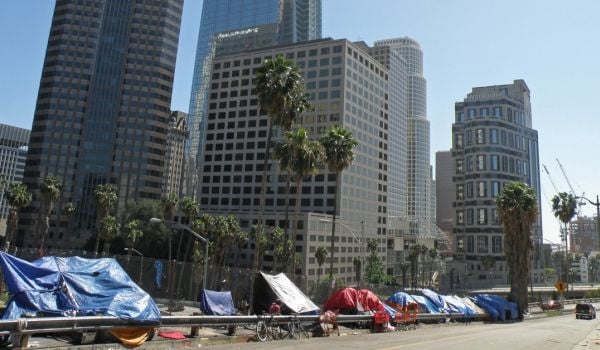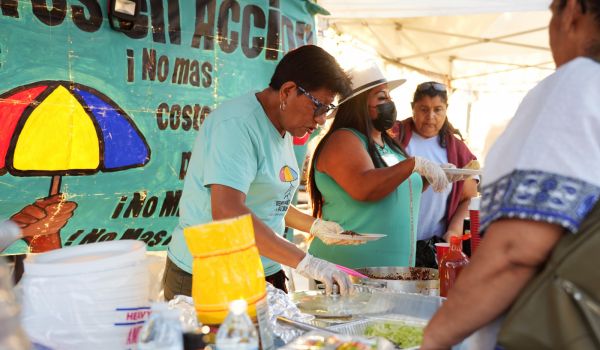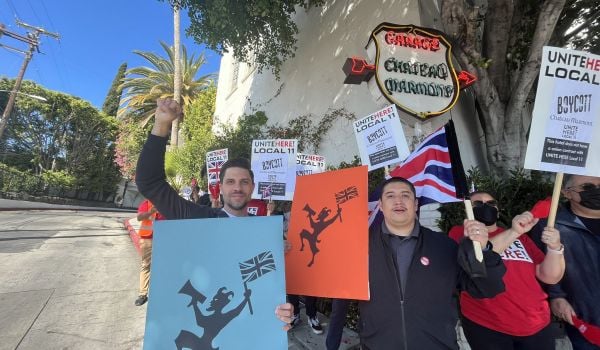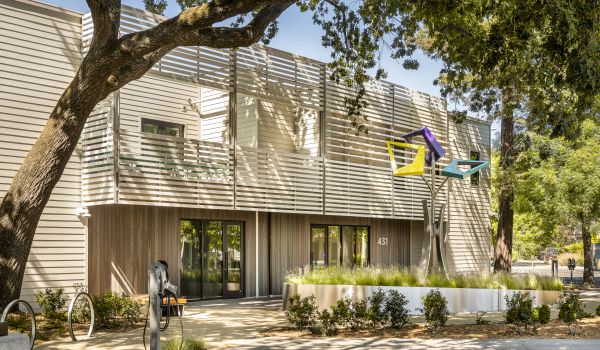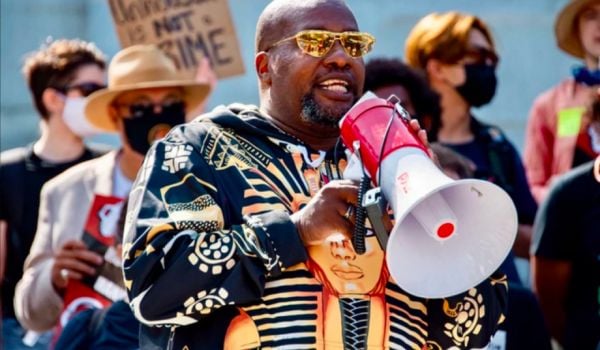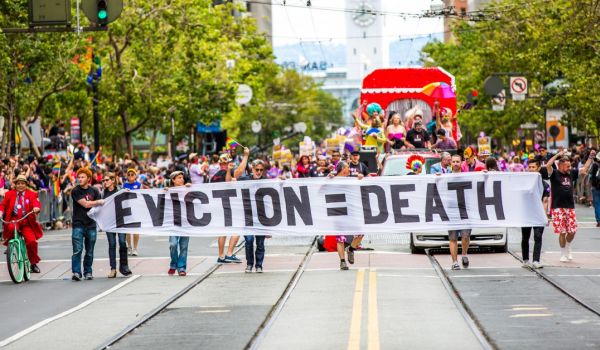In Los Angeles, two women with unique backgrounds are creating infrastructure that will lead to greater energy efficiency in the region. They are including groups traditionally marginalized in such endeavors — women, minorities and young people — proving that new public works projects can engage the whole community.
As president of FCI Management Consulting, Pat Watts employs 60 people and provides energy services for small businesses as a contractor for Southern California Edison’s direct install program. Her firm conducts energy audits, installs energy efficient technologies and evaluates performance at no cost to the business or property owner.
Watts is also a black female contractor working in two non-traditional sectors — utilities and construction. People with her background are few and far between in these industries. “I met maybe one or two… nationwide,” she says. But she makes clear that “no one gives me anything. I don’t feel entitled to anything. I earn everything the hard way. And as a black woman you have to work harder, smarter to take advantage of opportunities.”
Watts would know. In a 22-year tenure at Southern California Edison (SCE), she started as a temp clerk, climbed her way to customer service, and spent her last 10 years in public affairs and community relations. Then she was offered voluntary retirement at age 47. Her situation was not as dire as many others during the 1990s era of corporate downsizing, and she wanted to make a difference for young people from communities of color. At the time, Los Angeles was still struggling with how to rebuild after the 1992 riots. To her the answer was clear: jobs.
Today Watts mentors young people in the energy sector, a field she says “is elusive to them.” As a part of her business contract with SCE, she has developed a full-service training program, providing youth education in entry-level jobs such as installer, auditor and back office support. The students receive on-the-job and classroom training, and are also sent to SCE training classes to learn about new energy technologies. The result is young people with marketable skills after six to nine months.
Not only do her trainees get jobs in the field, but they are good enough that Watts employs them herself. Out of the first class alone, FCI hired more than half a dozen of its trainees. Some are still with the firm.
Watts also brings her training experience to the larger community as an adviser to the Emerald Cities Collaborative’s E-Contractor Academy, a green-building boot camp for minority and women contractors.
Like Watts, Veronica Soto began her work in next-generation infrastructure in the wake of a Los Angeles calamity — the 1994 Northridge Earthquake. Soto was recruited by then-mayor Richard Riordan to develop an investment program that would rebuild the Santa Monica Freeway and other broken buildings and systems, while creating economic opportunities specifically focused on small, women- and minority-owned companies. She imagined ways to maximize disaster recovery for economic benefit, an approach still considered groundbreaking almost 15 years later.
On the heels of the Northridge Earthquake was another infrastructure challenge: The federal defense-conversion initiative of the 1990s, which sought to rebuild in the wake of Cold War-era military base closures. Soto was tasked with finding money to not only repurpose large government facilities, but to mitigate the negative effects of base closings on local civilians, businesses and communities. “I relished the opportunity … [to] do public works projects a different kind of way,” Soto says, “proactively and strategically addressing social and economic needs of communities.”
But Soto’s record of building infrastructure that benefits everyone doesn’t end there. She developed programs for disadvantaged and women-owned businesses on the Alameda Corridor Project, a $2.4 billion commercial transit line connecting the Ports of Los Angeles and Long Beach to the region’s warehouse district, and performed a similar role on the L.A. Unified School District’s $20 billion construction project. Along the way, she became more skilled and committed to ensuring that small, minority- and women-owned businesses had a stake in public investments.
Soto continues to apply her experience to new challenges in public works. Since the Northridge Earthquake, more environmentally sensitive infrastructure standards are driving the next economy. Soto knows that the next generation of infrastructure is green infrastructure.
Soto’s work with the Emerald Cities Collaborative is a prime example of this commitment to building systems equipped to deal with new realities. A lot is at stake, including continuing to meet public expectations, an increasing number of natural disasters, as well as myriad public health and safety issues. But she is also adamant that these investments also need to support the local economy, including “People of color [who] have been excluded from public policy.” Soto is working with ECC on a green building training program that will ensure that minority community members continue changing the economic landscape — as both Soto and Watts have done for nearly two decades.
Former mayor Tom Bradley once said that people came to Los Angeles “looking for a place where they can be free, where they can do things they couldn’t do anywhere else.” Veronica Soto and Pat Watts are living examples of this vision, living their own dreams while revitalizing city infrastructure so that others may follow in their footsteps.
The Emerald Cities Collaborative is a grantee of the Surdna Foundation.
The Works is made possible with the support of the Surdna Foundation.


